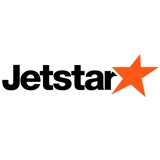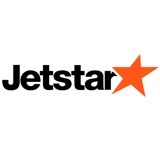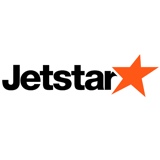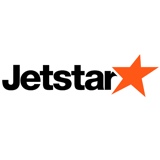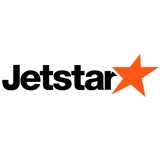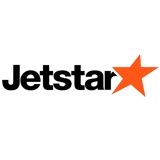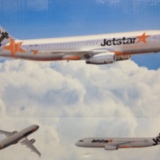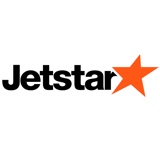Information
-
Document No.
-
Audit Title
-
Client / Site
-
Conducted on
-
Prepared by
-
Location
-
Personnel
A) ARRIVAL
-
1. Are communications systems between ground crew/customer service and engineering in place & used effectively? (CASA Form 106)
-
-
Comments
-
2. Has an FOD inspection been made of the bay/gate? Is all aircraft receipt equipment (chocks, ground communication headset, and warning cones) present and serviceable?
-
-
Comments
-
3. Is bridge fully retracted? If driveable type - is it Parked within its “Home Position” and green parked/home indicator light illuminated?
Serviceable? (Form 106) -
-
Comments
-
4. Is all GSE parked behind storage/staging line markings?
-
-
Comments
-
5. Was receipt of the aircraft in accordance with OM15 (hand signals, chocks, warning cones, all clear signals to ramp and bridge operator etc)? (CASA Form 865)
-
-
Comments
-
6. Are “circle of safety” procedures adhered to by all ground staff? (Form 106)
-
-
Comments
-
7. If manual stairs are used are mandatory numbers of staff utilised and are the stairs manipulated and positioned correctly (min 25mm from fuselage) are the stairs sufficiently padded so as to prevent aircraft fuselage damage? (Form 106)
-
-
Comments
-
8. Are door procedures performed in accordance with Jetstar procedures (3 sec wait etc, handle stowage, gust lock use)?
-
-
Comments
B) UNLOADING
-
9. Is the leading hand/loadmaster present?
-
-
Comments
-
10. Are cargo doors operated correctly (appropriate preparations dependant upon aircraft type) and are clearance checks performed whilst the doors are in transit, are door operating control access panels closed once the door is opened?
-
-
Comments
-
11. If cargo doors A330 are opened from loaders are hand rails and decks configured correctly?
-
-
Comments
-
12. Are loaders positioned in accordance with “circle of safety” protocols?
-
-
Comments
-
13. Is the unloading of containers/pallets performed in a safe manner, including the use of the CLS system?
-
-
Comments
-
14. Once holds are discharged are the security checks and inspection of compartment 5 conducted and recorded when required (first flights, unattended aircraft, and international operations)?
-
-
Comments
-
15. If loading is not to commence immediately does the operator fully lower the forward deck, if extended turnaround/ground time are aircraft holds reclosed? (unattended aircraft)
-
-
Comments
C) LOADING
-
16. Is the leading hand/loadmaster present during all loading operations, has load information been distributed to the loading team in the way of LIR/ULA (check version # & effective dates for ULA validity)?
-
-
Comments
-
17. Are ULD’s inspected for serviceability prior to loading?
-
-
Comments
-
18. Does the leading hand & loader operator carry out a 3-way check prior to loading each ULD/pallet (is this recorded on loader copy ULA A320/1 only) are ULD inspected for serviceability prior to loading?
-
-
Comments
-
19. If personnel ride the rear deck is this done in a safe manner (no other load, marked area to stand etc)?
-
-
Comments
-
20. Where “NIL FIT” positions exist are they inspected by the leading hand/loadmaster?
-
-
Comments
D) GROUND SERVICING
-
21. Do ground service vehicles comply with “circle of safety” protocols (catering, cleaning, engineering etc) are vehicle driven in a safe and professional manner, are the vehicles in safe working order? (Form 106)
-
-
Comments
-
22. Where utilised are high lift vehicles marshalled into and from the aircraft service position, service doors operated proficiently and are fall from heights safety provisions in place?
-
-
Comments
-
23. If compartment 5 is utilised does the belt loader have balustrades fitted to provide fall protection, do staff climb onto the moving belt to gain compartment access, is the belt lowered whilst not in use ?
-
-
Comments
-
24. Is the refueller positioned so as to allow egress if an emergency was to occur? (Form 106)
-
-
Comments
-
25. Does a member of the technical crew or the refueller remain in the vicinity of refuelling operation at all times to manage communications with the flight deck technical crew (Form 106)
-
-
Comments
-
26. In accordance with health regulation requirements are waste and water vehicles/carts segregated so as not to allow cross contamination, the same applies for the service staff. If one individual is used potable water must be serviced prior to waste, is waste and water servicing completed in accordance with OM15 (PPE included)?
-
-
Comments
E) RAMP SAFETY
-
27. Are airside staff appropriately attired for the task (foot wear/hearing protection/ ASIC/High Visibility clothing/uniform)?
-
-
Comments
-
28. Does staff work at an appropriate pace and do not rush haphazardly between tasks?
-
-
Comments
-
29. Are vehicles operated/driven in a professional and proficient manner (do staffs refrain from horse play etc.)? (Form 106)
-
-
Comments
-
30. When vehicles are parked are they secured correctly (transmission in park & hand brake applied)?
-
-
Comments
-
31. Are there refuelling emergency stop facilities located within easy access from the relevant parking bay, are staff aware of their location and use? (Form 113)
-
-
Comments
-
32. Is the general condition of the gate/bay suitable for Jetstar operations (applicable aircraft type nose wheel stop line/NIGS system with emergency stop/ clearly marked GSE storage/ staging areas/sufficient lighting for night operations) FOD bins/spill kits? (Form 113/106)
-
-
Comments
-
33. Are staff aware of local severe weather procedures in place for lightning storms/weather extremes? (Form 106)
-
-
Comments
-
34. Are ground vehicles positioned so as not to infringe refuelling hazard points (3m from vent/fill and refuelling equipment)? (Form 113)
-
-
Comments
-
35. In general is CASA Form 106/CAR 221 complied with in relation to:
• Safety routes & staff attendance with pax?
• Directions to board?
• Protection from jet blast and clear of aircraft/vehicles?
• Night/rain aspects? -
-
Comments
F) DEPARTURE
-
36. Was AAA reconciliation completed, did the leading hand/loadmaster have a clear understanding of the process and the mandatory documentation utilised (including all declarations)
-
-
Comments
-
37. Was the flight documentation complete/accurate and delivered to the flight deck in accordance with the PTS
-
-
Comments
-
38. Is the towbar inspection certification current/was the bar inspected including shear pins (and spare) prior to selection for use (including appropriate for aircraft type)?
-
-
Comments
-
39. Did the dispatcher complete a diligent “duty of care” walk around prior to dispatch, importantly the door and surround of L1 once stairs or aerobridge is removed/retracted is the last area to be inspected?
-
-
Comments
-
40. Was the towbar connected and the pushback operation conducted in accordance with OM15 requirements (process and sequence of events) ?
-
-
Comments
-
41. Was the aerobridge operator standing by in the event of a “return to gate” (must remain in situ until aircraft moves under its own power)?
-
-
Comments
G) EQUIPMENT
-
42. Are staff aware of the procedures for rendering the vehicle/equipment as unserviceable and prevent further use whilst in this state, are daily inspections completed to verify serviceability?
-
-
Comments
-
43. Are staff approved/licensed for specific equipment if so how is this displayed/communicated, are vehicles displaying AUA?
-
-
Comments
-
44. Are ULD’s stored either on dollies or in purpose built racking?
-
-
Comments
-
45. Aircraft Cleaning Agents – In stock and meet requirement of Cleaning Materials List in OM15?
-
-
Comments
-
46. Aircraft Cleaning Equipment – Interior cleaning equipment available and serviceable?
-
-
Comments
-
Findings:
Please action and incorporate as part of the corresponding system audit reference number.
Jetstar Ground Operations Compliance – version 1.0 March 2013
-
Signature
